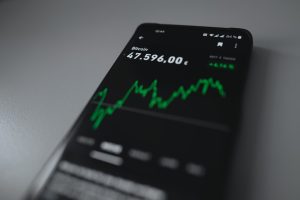Forex trading is a complex and dynamic market that requires a good understanding of market trends and patterns. To make effective trading decisions, traders need to use various tools and strategies. Two popular approaches used by traders are the Fibonacci and Elliott Wave analysis.
The Fibonacci analysis is a mathematical tool that uses a sequence of numbers to identify key levels of support and resistance in the market. The sequence starts with 0 and 1 and each subsequent number is the sum of the two preceding numbers (0, 1, 1, 2, 3, 5, 8, 13, 21, 34, 55, 89, 144, etc.).
Traders use the Fibonacci ratios to identify levels of support and resistance in the market. The most commonly used ratios are 38.2%, 50%, and 61.8%. These ratios are derived from dividing the current price movement by the Fibonacci sequence.
For example, if the price of a currency pair moves from 100 to 150, the Fibonacci levels can be calculated as follows:
– 38.2% level = 150 – ((150 – 100) x 0.382) = 123
– 50% level = 150 – ((150 – 100) x 0.5) = 125
– 61.8% level = 150 – ((150 – 100) x 0.618) = 127
These levels are important because they indicate potential areas of support and resistance. Traders can use these levels to enter or exit trades, set stop-loss levels, and take-profit levels.
The Elliott Wave analysis is a technical analysis approach that identifies patterns in market trends. The analysis is based on the theory that markets move in waves, and these waves can be predicted using mathematical patterns.
The Elliott Wave analysis identifies two types of waves: impulse waves and corrective waves. Impulse waves are the main trend waves, and corrective waves are the counter-trend waves.
Traders use the Elliott Wave analysis to identify the current stage of the market trend and predict the future price movement. The analysis is based on the following rules:
– Wave 1: The first wave is the start of the trend, and it is usually the weakest wave.
– Wave 2: The second wave is a corrective wave that retraces a portion of the first wave.
– Wave 3: The third wave is the strongest and longest wave, and it usually exceeds the high of the first wave.
– Wave 4: The fourth wave is a corrective wave that retraces a portion of the third wave.
– Wave 5: The fifth wave is the final wave of the trend, and it is usually the strongest and longest wave.
Traders can use the Elliott Wave analysis to enter or exit trades, set stop-loss levels, and take-profit levels. The analysis can also be used to identify potential areas of support and resistance.
To use the Fibonacci and Elliott Wave analysis in forex trading, traders need to have a good understanding of these tools and strategies. They also need to have access to reliable market data and charts.
Traders should also use other technical analysis tools and indicators to confirm their trading decisions. These tools include moving averages, trend lines, and candlestick patterns.
In conclusion, the Fibonacci and Elliott Wave analysis are powerful tools that can help traders make effective trading decisions. These tools can be used to identify key levels of support and resistance, predict future price movements, and confirm trading decisions. However, traders should use these tools in conjunction with other technical analysis tools and indicators to maximize their trading success.





